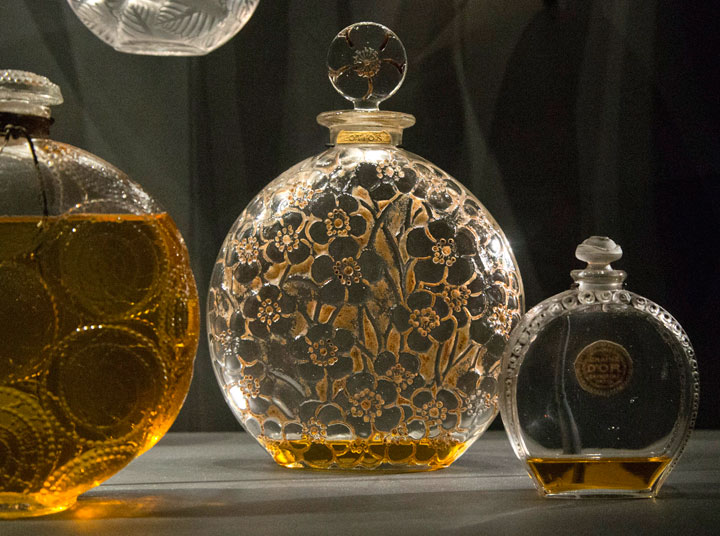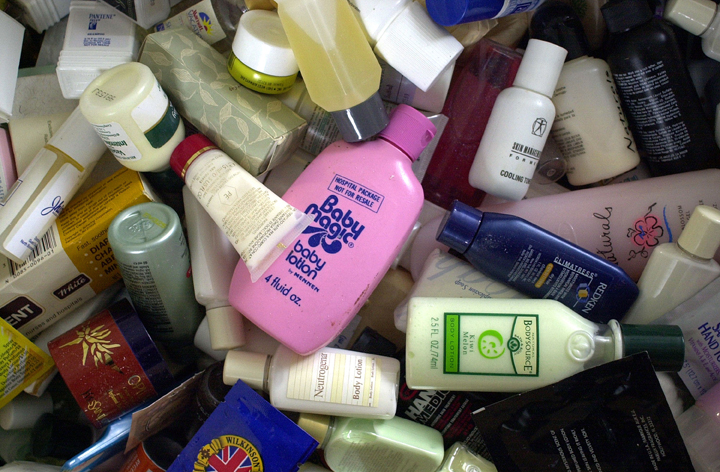You’re getting ready for a night out. You might put on some foundation, maybe some lipstick, eyeshadow. You shave, put on perfume or cologne. Do you know how many chemicals you’ve just exposed yourself to?

Most people apply cosmetics without ever really thinking about what’s in them. There’s a high degree of trust that these products are regulated by our government.
However, an auditor general’s report released on May 31, concluded that Health Canada not only doesn’t test cosmetic products regularly, they also have no power to recall products.
READ MORE: Auditor general finds Health Canada not testing cosmetics regularly, no power to recall
“I think there’s a high degree of trust in Canada that the products that are being sold here are tested and safe,” said Maggie MacDonald, toxic program manager at Environmental Defence Canada.
WATCH: Cosmetics do not undergo Health Canada testing prior to hitting store shelves

MacDonald said that, while other industries such as toys and cleaning products are tested regularly, she was disturbed to see that wasn’t the case with the cosmetics industry.
While not all chemicals are linked to cancer, they can cause adverse reactions in some people, or may have an environmental effect.
Here are just a few chemicals you can find in some cosmetics.
Phthalates
Phthalates (pronounced THA-lates), are found in plastics, but also in such cosmetics as perfumes and nail polish.
This group of chemicals has been linked to asthma, as well as reproductive issues.
“If pregnant women are exposed to phthalates, the male fetus, there can be impacts on the development on the reproductive system that can lead to other health problems in life,” MacDonald said.
One phthalate in particular — di(2-ethylhexyl) phthalate (DEHP) — has been noted by the International Agency for Research on Cancer (IARC) as a possible carcinogen.

Get breaking National news
“Exposure to DEHP has been associated with some hormone-related outcomes (e.g. endometriosis, thyroid hormone disruption and testicular dysgenesis syndrome), thus studies of breast and testicular cancer are of special interest,” the agency wrote in a study.
MacDonald said that often, phthalates won’t appear on an ingredients list. However, if a product lists simply “fragrance” and there is very strong smell, it could indicate that it contains phthalates.
WATCH: Health Canada denied mandatory safety reporting for cosmetics in 2012

Parabens
Parabens are used as a preservative in cosmetics, but also in fragrances.
The concern with parabens is that they mimic estrogen and as such are considered an endocrine disruptor. More concerning is that they easily penetrate the skin, so they can be absorbed.
In 2013, the World Health Organization issued a report, State of Science of Endocrine Disruptors, which found that parabens could be linked to breast cancer. Not only that, because they are an endocrine disruptor, these irreversible effects “may not become evident until later in life.” They have also linked them to breast cancer.
“If the World Health Organization is issuing a public report with statements to that effect, I think that’s a real cause for concern,” MacDonald said.
Artificial musks
Have you ever wondered what “fragrance” or “parfum” means?
According to the David Suzuki Foundation, around 3,000 chemicals are used to create fragrances and parfum. Not only that, but they are used in almost every cosmetic and personal care products, such as perfumes, colognes, and deodorants.
“If a product just says ‘fragrance’ or ‘parfum,’ often artificial musks are a component of that,” said MacDonald.
Not only are these linked with asthma, migraines as well as being another source of endocrine disruption, but they have environmental effects as well.
BHA and BHT
Butylated hydroxyanisole (BHA) and butylated hydroxytoluene (BHT), which are synthetic antioxidants used as preservatives in moisturizers and lipsticks, can cause allergic reactions.
These two chemicals have been flagged as possible carcinogens by the IARC. And in Europe, where regulations on these chemicals are stronger, it has been listed as a Category 1 priority substance, due to evidence that they are endocrine disruptors.
Health Canada and the Food and Drug Administration have concluded that at current exposures, they are safe.
Petrolatum
There hasn’t been a direct link between petrolatum and cancer, however, some studies have found that there is a risk of contamination from polycyclic aromatic hydrocarbons (PAH). PAHs — found in coal, gasoline and tobacco — are linked to cancer.
Petrolatum, which is mineral oil jelly (petroleum jelly), is found in moisturizers and hair-care products (think: shiny hair).
Health Canada acknowledges that there is a chance that there could be impurities in some products. However, they only recommend “that manufacturers follow Good Manufacturing Practices (GMPs) and use acceptable quality materials (for example, pharmaceutical grade).”
While not all of these chemicals are directly linked to cancer, MacDonald said that the pressing issue is that Health Canada do more testing and enforcement.
“There are also a lot of chemicals in cosmetics that are allowed to be there and shouldn’t be there,” MacDonald said. “Chemicals such as triclosan and parabens; these are known to be endocrine disruptors, meaning they can impact the hormonal system, and yet Health Canada still allows those chemicals to be used to a certain extent in these products.
“The main message is to make sure that companies do their part to reduce their use of chemicals … but also Health Canada has a duty to do much more.”




Comments